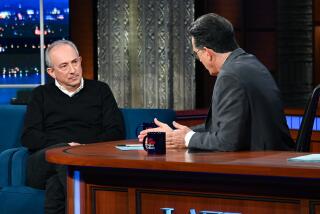‘Bootleg’ Volume of Long-Secret Dead Sea Scrolls Is Published
- Share via
NEW YORK — Two biblical scholars published a “bootleg” volume of long-secret Dead Sea Scrolls Wednesday, boasting they had broken the monopoly of academics who hid the material from the public for decades.
But the men in charge of the official publication of the 2,000-year-old scrolls denounced the tactic, saying it smacked more of betrayal than scholarship and hinted that legal action might be taken.
The publisher of the first of five volumes in “A Preliminary Edition of the Unpublished Dead Sea Scrolls” said the Hebrew transcription contained few historical or theological surprises.
“As far as the content, it’s not a bombshell,” said Hershel Shanks of the Biblical Archaeology Society, which published the “bootleg” volume.
The Dead Sea Scrolls, believed written between 200 BC and AD 68, were discovered in 1947 by Bedouin tribesmen in a series of caves in what is now the Israeli-occupied West Bank.
The scrolls give important glimpses into the development of Judaism and Christianity, providing a link between the teachings of Jesus and an ascetic Jewish cult called the Essenes.
A small group of scholars was assigned the task--first by Jordan and now by Israel--of translating and publishing the thousands of documents, but after four decades, many scholars complain that the bulk of the material is still unavailble.
The new work was produced by professors Ben-Zion Wacholder and Martin Abegg of Hebrew Union College in Cincinnati. They told a news conference in New York that they used a computer to collate a secret concordance made for the official translators.
A concordance organizes words in the context in which they appear, thus the computer was able to generate a likely reconstruction of the presumed original texts.
John Strugnell of the Harvard University School of Divinity, who headed the official committee until he was forced to resign amid charges of incompetence and anti-Semitism, said he had given the concordance to Wacholder only for his scholarly use.
“The concordance was not meant to produce a version of the scrolls. The reconstruction of the scrolls is about 20% wrong, and the people who will try to use it will never know what is right and what is wrong,” Strugnell said.
Wacholder said the fragments published in the first volume contained new insights into the calendar used by the ancient Hebrews, which was both a lunar and a solar one. He said it also contained rules governing the Jewish cult that wrote it, presumably the Essenes, on such things as marriage and social behavior.
More to Read
Sign up for Essential California
The most important California stories and recommendations in your inbox every morning.
You may occasionally receive promotional content from the Los Angeles Times.













